stanford
Latest

Scientists discover weird virus-like 'obelisks' in the human gut and mouth
Scientists have discovered mysterious virus-like ‘obelisks’ in the human gut and mouth. These tiny structures fall into the viroid class and seem to hang out inside of certain strains of bacteria, though not always.
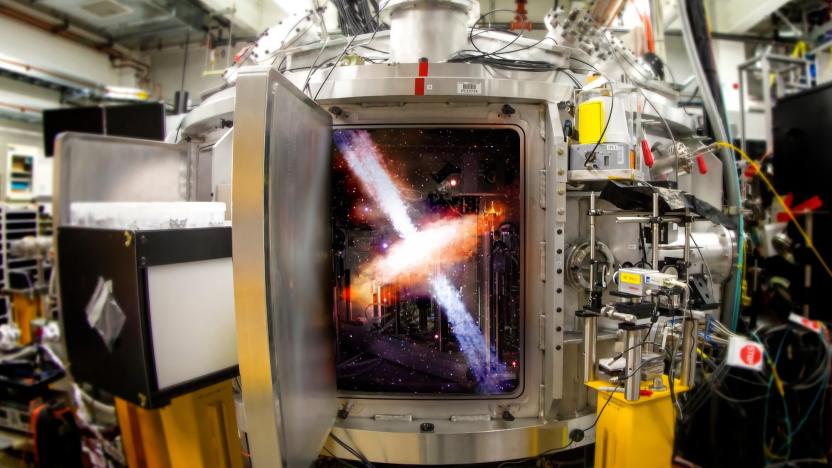
Stanford’s upgraded X-ray laser is up and running
The newly upgraded particle accelerator at the DoE’s Stanford Linear Accelerator Center (SLAC) has produced its first X-rays. The Linac Coherent Light Source (LCLS) upgrade, called LCLS-II, can emit up to a million X-ray pulses per second (8,000 times more than the original) and an almost continuous beam 10,000 times brighter than its predecessor.

Scientists observe elusive missing step in photosynthesis’ final stage
Researchers at the SLAC National Accelerator Laboratory and Lawrence Berkeley National Laboratory have shed new light on the final step of photosynthesis. They observed in atomic detail how Photosystem II, a protein complex found in plants, undergoes a transformation that leads to the loss of an extra oxygen atom. Scientists believe the discoveries will help provide a roadmap for optimizing clean energy sources.

Scientists have successfully engineered bacteria to fight cancer in mice
Researchers at Stanford Medicine have made a promising discovery that could lead to new cancer treatments in the future. Scientists conducted tests in which they altered the genomes of skin-based microbes and bacteria to fight cancer. These altered microbes were swabbed onto cancer-stricken mice and tumors began to dissipate.

A new electrolyte mixture may prevent EV batteries from catching fire
Your next EV or phone might be less likely to catch fire thanks to extra-salty batteries.

Fixing inefficient oil field flaring could drastically reduce methane emissions
Scientists have discovered that flaring during oil extraction lets more methane into the atmosphere than thought.

SLAC's newest laser works best when it's colder than outer space
It took nearly a decade but the new super-powerful, super-chilled coherent laser system at Stanford's SLAC is ready to unlock the quantum realm's secrets with massively powerful X-ray blasts.

'Atomically thin' transistors could help make electronic skins a reality
Stanford researchers have developed 'atomically-thin' flexible electronics that could make electronic skin (and new implants) practical.

Apple Watch can monitor the frailty of cardiovascular patients at home
A Stanford study has determined that the Apple Watch can monitor the frailty of cardiovascular disease patients when they're at home — it's about as good as a clinic.

Samsung, Stanford make a 10,000PPI display that could lead to 'flawless' VR
Samsung and Stanford have developed a 10,000PPI OLED screen that could lead to completely seamless VR displays.
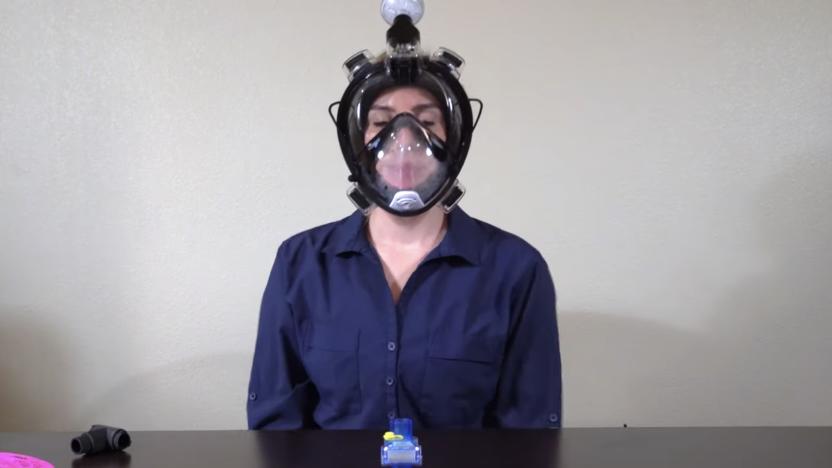
Stanford University lab repurposes scuba gear into reusable PPE
Manu Prakash and his team at Stanford University have turned a standard scuba mask into a reusable medical face mask.

Stanford, Scripps and Fitbit try using wearables to detect infections
Stanford, Scripps Research and Fitbit have unveiled an initiative that, if successful, would use wearables to catch the early signs of infection. The project will study data from five different wearables, each of which will have its own algorithm.
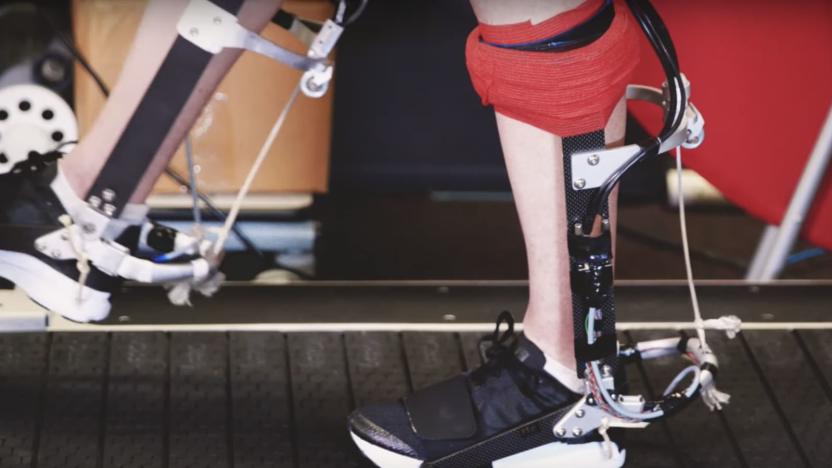
Engineers test a powered 'ankle exoskeleton' to make running easier
Ankle exoskeletons could help you run longer and faster and even serve as a new mode of transportation, according to a team of Stanford University engineers. The engineers tested a motorized exoskeleton rig that attaches around the ankle and foot and found that it made running 15 percent easier. They explained that when the exoskeleton's motor is switched on, it reduces the energy cost of running and allows the user to run longer than they're usually capable of. The device can also boost a runner's speed by as much as 10 percent.

Stanford moves classes online to deal with coronavirus outbreak
Online education is about to get a major (if short) field test. Stanford University is moving the last two weeks of winter quarter classes online "to the extent feasible" to reduce the chances of COVID-19 spreading on campus. There will be no classes in person starting March 9th, the school said. To help with the abrupt transition, the university will both provide "further guidance and tools" and encourage professors to cancel classes outright on March 9th if they need time to adapt their remaining classes.

Scientists make jellyfish swim faster to prepare for deep-sea exploration
Scientists at Caltech and Stanford University want to turn jellyfish into deep-sea explorers that could be directed around the ocean, recording info as they travel. In a paper published in the journal Science Advances, the team explains how they've developed a tiny, microelectronic prosthetic that can be attached to jellyfish, causing them to swim faster and more efficiently.
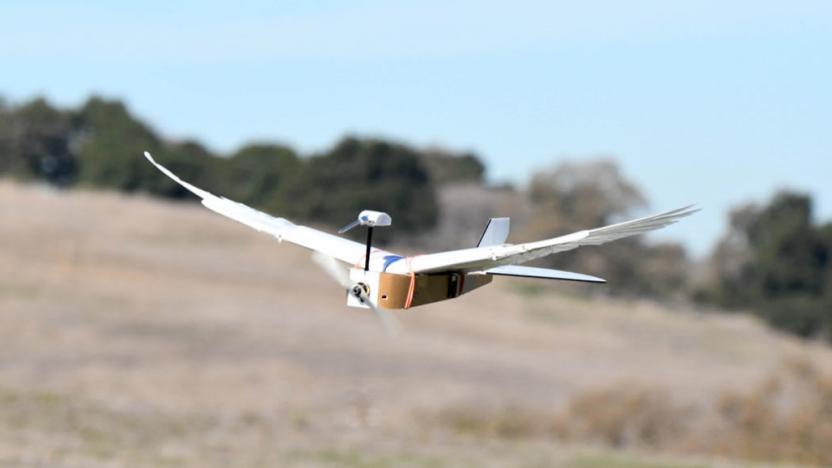
Pigeon-inspired drone bends its wings to make it more agile
To be able to develop unmanned aerial systems (UAS) more maneuverable than current models, roboticists are drawing inspiration from birds. A team of researchers from Stanford University's Lentink Lab, for instance, has built a robotic pigeon aptly called PigeonBot, which can bend, extend and simply change the shape of its wings like real birds can. Machines that can move their wings like real birds can make tighter turns in smaller spaces and can better navigate rougher winds, Dario Floreano, a roboticist from the Swiss Federal Institute of Technology Lausanne, told ScienceNews.

Stanford's new tech-laden hospital includes pill-picking robots
Technology only seems to find its way into hospitals in fits and starts. Stanford, however, is about to find out what happens when you build a tech-oriented hospital from the ground up. The university has opened a new hospital in Stanford Health Care's campus that aims to be as capable and connected as the phone in your pocket. You can control entertainment lighting and climate from a pad near your bed, while an updated MyHealth mobile app can help you contact a physician or guide you through the hospital's halls. However, the sheer automation of the hospital may be its real highlight.
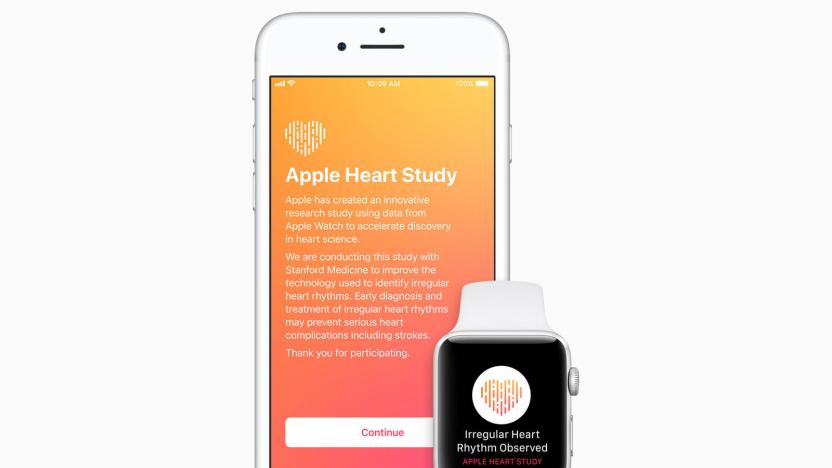
Stanford publishes its massive Apple Watch heart-rate study
The Stanford researchers that conducted Apple's Heart Study have published their paper in the New England Journal of Medicine. They previously released the study's preliminary results, but you can now read the full paper if you're curious about how they were able to come to the conclusion that, yes, the Apple Watch can detect atrial fibrillation. People who have the condition have irregular heartbeat and could suffer from stroke, blood clots and heart failure.

Sticker sensor monitors your body using wireless power
Wearable body sensors have a common problem: they need power and antennas, and all that equipment leads to bulky devices that influence your behavior. Stanford researchers, however, have developed a system that could be almost imperceptible. Their BodyNet sticker sensor gathers power and transmits data using an RFID connection to a receiver on nearby clothing, making the sensor itself about as comfortable and flexible as an adhesive bandage. It measures subtle changes in skin that provide a wealth of data for the body, whether it's your heartbeat, breathing rate or muscle activity.
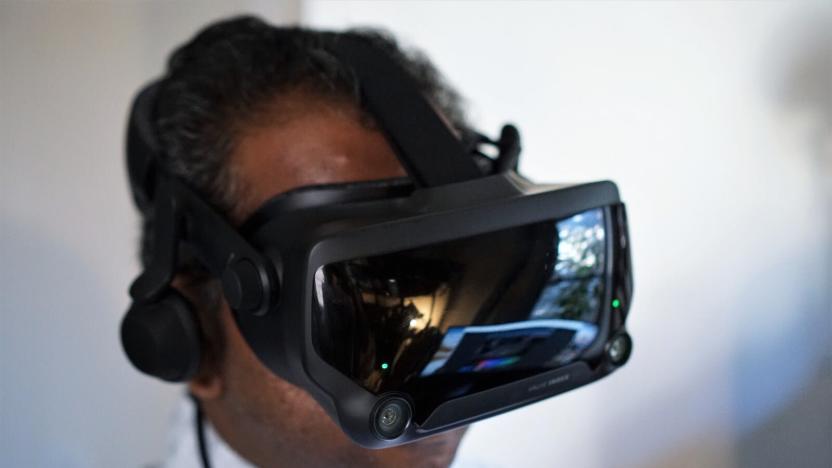
Faster algorithm could lead to more realistic sounds in VR
Producing realistic sound models in VR is tricky, even compared to conventional video games. You don't always know how objects will sound in a given environment or where the listener will be, and you don't have the luxury of waiting hours for conventional sound modelling to finish. Thankfully, Stanford researchers have found a way to produce those models in a viable time frame. Their algorithm that can calculate 3D sound models in mere seconds -- not real-time, but quickly enough that you could pre-calculate sound models for very specific situations.






